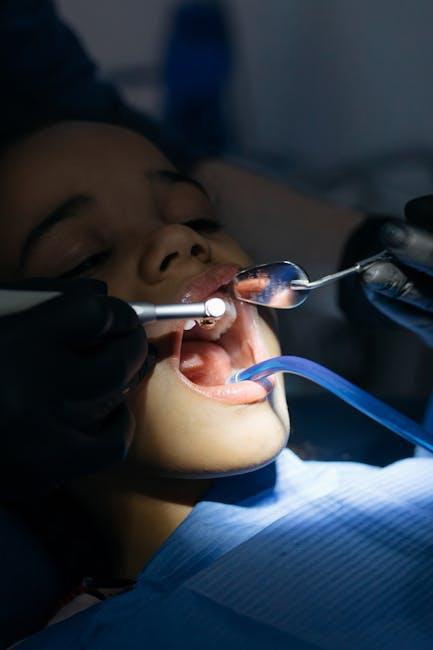Kentucky Has Significantly Higher Rate of Dental Decay in Kids Than National Average – WKYT
Dental health is a critical aspect of a child’s overall well-being, yet alarming reports from WKYT reveal that Kentucky’s children suffer from dental decay at rates significantly higher than the national average. This raises concerns about oral healthcare access, preventive measures, and awareness in the state. In this article, we delve into the statistics, causes, consequences, and practical tips that parents and caregivers in Kentucky can use to turn the tide on childhood dental decay.
Understanding the Scope: Dental Decay Rates in Kentucky
Dental decay, commonly known as cavities or caries, remains one of the most prevalent chronic diseases among children in the United States. However, Kentucky stands out with a substantially higher burden on its young population.
| Metric | Kentucky Kids | National Average |
|---|---|---|
| Percentage of children with untreated dental decay | 28.5% | 13.1% |
| Children aged 6-9 with cavities | 42% | 27% |
| Percentage of kids visiting a dentist annually | 54% | 71% |
Source: WKYT, Centers for Disease Control and Prevention (CDC)
Why Are Kentucky’s Kids More Susceptible to Dental Decay?
Several intertwined factors contribute to this concerning trend:
- Limited Access to Dental Care: Rural parts of Kentucky face shortages of pediatric dentists and oral health clinics.
- Socioeconomic Challenges: Higher poverty rates correlate with fewer regular dental visits and inadequate preventive care.
- Diet and Nutrition: Diets high in sugar-laden snacks and beverages promote bacterial growth that causes cavities.
- Lack of Oral Health Education: Communities with less focus on dental hygiene are more prone to decay.
- Water Fluoridation Variability: Some areas in Kentucky lack optimal fluoride levels in drinking water, reducing protective benefits.
The Consequences of Untreated Dental Decay in Children
Ignoring dental decay in children can have severe short and long-term effects, including:
- Pain and Discomfort: Untreated cavities cause chronic toothache, affecting eating and sleeping.
- Speech Development Issues: Difficulty chewing or missing teeth can impact speech clarity.
- Lower Academic Performance: Oral pain leads to missed school days and reduced concentration.
- Increased Risk of Infection: Severe decay may lead to abscesses, requiring emergency care.
- Elevated Healthcare Costs: Advanced dental treatments are expensive and sometimes inaccessible.
Practical Tips for Parents & Caregivers to Combat Dental Decay
Fortunately, there are effective ways to safeguard children’s smiles. Here are practical steps Kentucky parents can take:
- Regular Dental Visits: Schedule biannual check-ups starting at the eruption of your child’s first tooth.
- Promote Proper Brushing & Flossing: Children should brush twice a day using fluoride toothpaste and floss daily as soon as two teeth touch.
- Healthy Dietary Choices: Limit sugary snacks, sodas, and juices while encouraging water, fruits, and vegetables.
- Use Fluoride Treatments: Discuss with your dentist about topical fluoride varnishes or supplements if water fluoridation is inadequate.
- Educate Children on Oral Health: Make tooth brushing fun by using apps, charts, or reward systems.
- Community Resources: Explore free or reduced-cost clinics and school dental programs available in Kentucky.
Case Study: Bloomfield Elementary’s Oral Health Initiative
In 2023, Bloomfield Elementary in Kentucky launched a school-wide dental health program that significantly lowered cavity rates over one year. The initiative included:
- Weekly supervised brushing sessions
- Monthly oral health workshops for parents
- Collaboration with local dentists for fluoride varnish applications
- Distribution of dental hygiene kits to students
Results showed a drop in untreated dental decay from 33% to 18% among participating students, demonstrating the power of community-driven oral health interventions.
First-Hand Experience: A Kentucky Mom’s Story
Jessica, a mother of two from Lexington, KY, shares her experience:
“My youngest son had several cavities by age 5 because we didn’t fully understand the importance of early dental care. After the dentist’s guidance, we started brushing together every night and cut back on sugary treats. His next checkup showed remarkable improvement. Early education really made the difference for our family.”
Summary Table: Quick Tips for Preventing Kids’ Dental Decay
| Action | Description | Frequency |
|---|---|---|
| Dental Check-ups | Regular visits to a pediatric dentist | Every 6 Months |
| Brushing & Flossing | Use fluoride toothpaste & floss daily | Twice Daily / Daily |
| Healthy Diet | Limit sugar and choose nutritious foods | Daily |
| Fluoride Use | Topical treatments or supplements | As Recommended by Dentist |
| Oral Health Education | Teach children proper hygiene habits | Ongoing |
Conclusion: Taking Steps Towards Healthier Smiles in Kentucky
Kentucky’s higher-than-average rate of dental decay among children is a public health issue that demands urgent attention from parents, communities, and healthcare providers alike. Increased awareness, preventive care, and community support can bridge the gap and ensure Kentucky’s children enjoy healthier, happier smiles. By staying informed and proactive, families across Kentucky can combat dental decay and foster long-term oral wellness.
For more local updates and resources on children’s dental health, keep following trusted news outlets like WKYT and reach out to your community health centers today.


